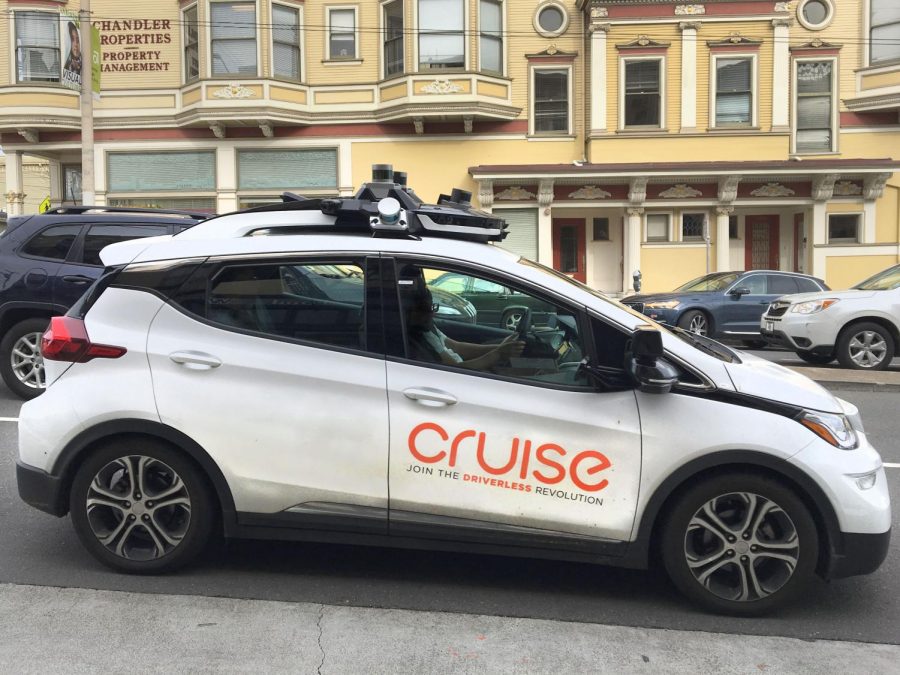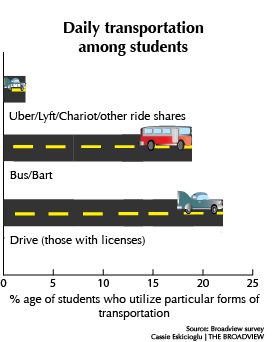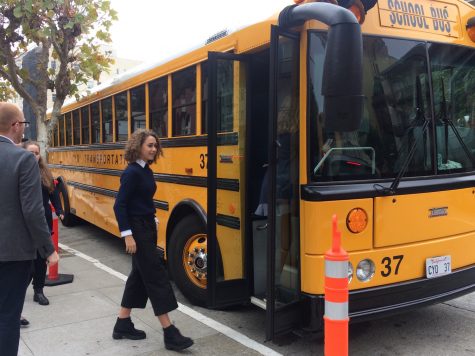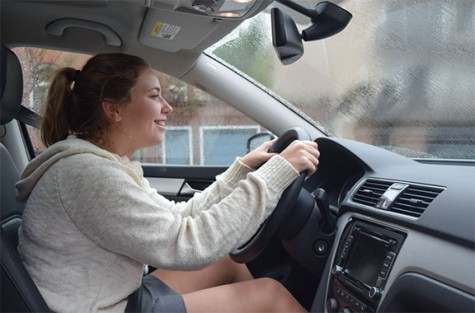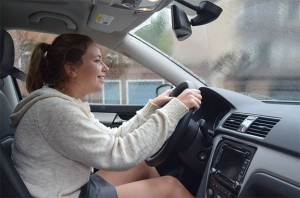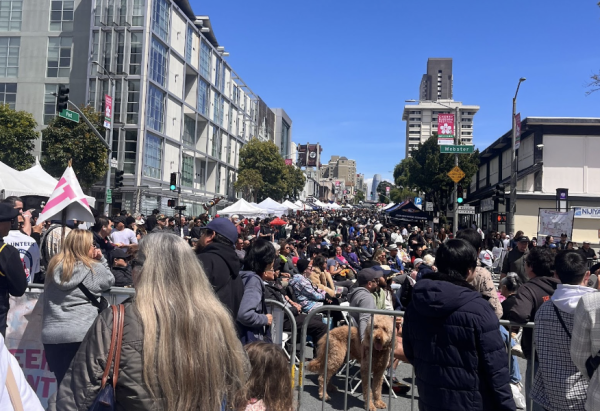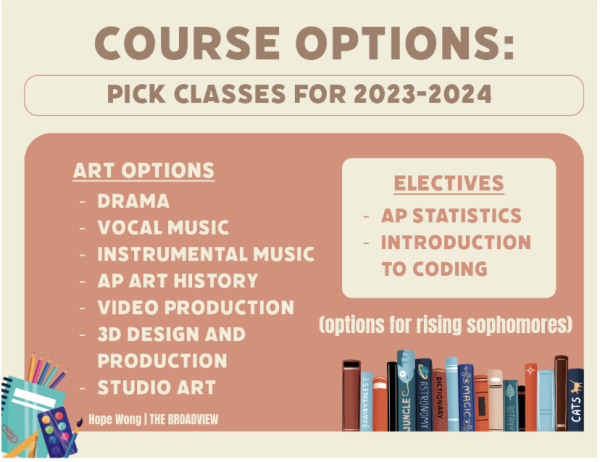Autonomous vehicle awareness increases
Industry leaders work together to inform public, policy makers
A Cruise electric self-driving vehicle drives down Divisadero Street. The vehicles plan to eventually function as a rideshare service, like Uber or Lyft, for the public.
March 28, 2019
Cars with sensors whirling on top and jutting out of the sides — prototypes of self-driving cars being tested for public use — have become fairly common sites on San Francisco streets. With the rapid advancement of automated vehicle technology, industry leaders are educating future consumers, while testing their products.
“We want everyone to be a part of the conversation about the future of our transportation system,” Tara Andringa, coalition manager for Partners for Automated Vehicle Education, said. “We believe that public engagement will be more successful if it is a united effort – rather than having each organization making its own outreach
efforts.”
PAVE — a coalition of industry, nonprofit, and academic institutions — is attempting to educate the public and policymakers on facts regarding automated vehicles. One of the founding members is Cruise, a self-driving car company based in San Francisco.
One of the most common misperceptions about self-driving cars is that there are currently fully autonomous or driverless vehicles on the road, according to Andringa.
“There are no fully automated vehicles available for public use, but media reports regularly refer to ’driverless cars,” Andringa said. “It’s a problem because concerns about how today’s vehicles behave – even if they are not fully automated – create public mistrust that could stand in the way of achieving the benefits of automated vehicles.”
Seventy-three percent of Americans reported that they would be afraid to ride in a fully self-driven vehicle — 10 percent higher than last year — according to a study published by AAA.
Cruise’s Autonomous Vehicle Trainers are currently safety testing the company’s electric self-driving vehicles in San Francisco, which plan to function similarly to rideshare companies, like Uber and Lyft, are currently being driven and safety tested in San Francisco, according to Mason Smith, Public Affairs Manager for Cruise.
“In San Francisco, there are more people, cars and cyclists, which requires a car to be aware of all of the objects and roadway users at any given time,” Smith said. “That rich environment tests our object detection, prediction and response
functions.”
Trainers, who oversee the safe testing of their vehicles, go through an extensive training program in which safety is emphasized. Cruise will not deploy its vehicles for public use until it is completely confident the vehicles are safe, according to Smith.
“The person in the driver’s seat has oversight over the vehicle and can disengage autonomous mode just like deactivating cruise control in traditional vehicles,” Smith said. “With the turn of the wheel or press of the brake, they are able to convert the vehicle from autonomous mode or safety testing mode to manual mode. The car can then be driven as if it were any
normal car.”
Computer Science teacher Liam Carey said he has integrated the discussion of automated vehicles into his curriculum because of its relevance to computer science and life in San Francisco.
“Students are growing up seeing this technology develop, whereas it’s a really strange concept to most adults,” Carey said. “The more they understand it, the more they can make decisions about the future of that technology by making laws surrounding them or actually making the cars.”
The United States fell from third to fourth place in the 2019 Autonomous Vehicles Readiness index published by KPMG International, trailing The Netherlands, Singapore and Norway.
The study cited a lack of a national approach towards autonomous vehicles, which the index stated could cause difficulty in attracting autonomous vehicle business to the United States.
This deficiency may change as three Republicans in the House of Representatives called for “bi-partisan self-driving vehicle legislation” in a letter referencing the index to Frank Pallone, chairman of the House Energy and Commerce Committee on March 9.
The letter also referenced the potential self-driving cars have in the reduction of the number of car accidents. An estimated 40,000 people died in car accidents and 4.5 million were seriously injured in 2018, according to the National Security Council.
“We’re building the technology that we think can reduce the likelihood of crashes on the road,” Smith said.
Ninety-four percent of car accidents have driver-related causes, comprised mostly of recognition errors, like being distracted, decision errors, like driving too fast, and performance errors, like poor directional control, according to the National Highway Traffic Administration.
“PAVE exists to combat confusion and misperception with cold, hard facts,” Andringa said. “To achieve the benefits autonomous vehicles can bring, the public must understand, accept and trust them.”




